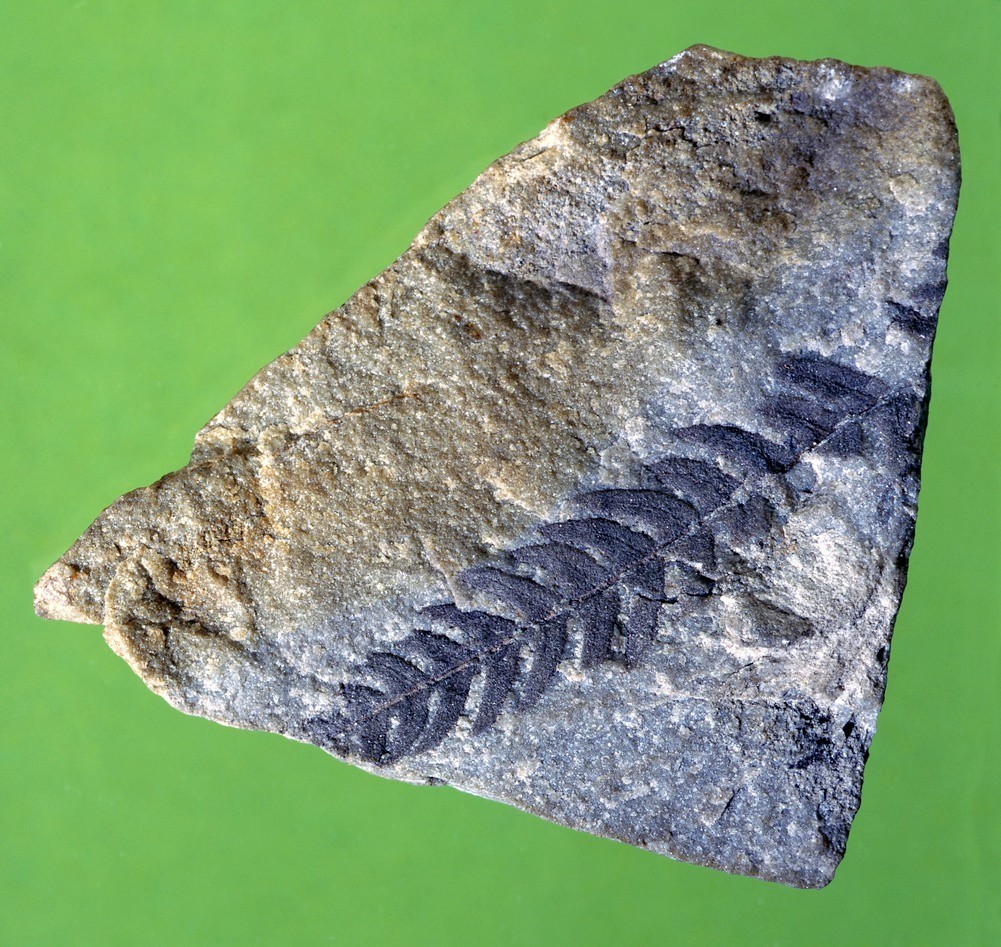| P number: | P549465 |
|---|---|
| Caption: | Cladophlebis, a fern from Cretaceous times. |
| Description: | During Cretaceous times about 130 million years ago, the Wealden woodland of southern England was home to a variety of animals, including dinosaurs. Coniferous trees, cycads and tree ferns commonly grew in these woodlands, but small ferns like Cladophlebis formed the undergrowth. It was at this time that flowering plants, the angiosperms, were just beginning to evolve. The fossil specimen shown here is part of a single pinna (one of the numerous leaflets or branches that comprise a fern frond) of Cladophlebis. It is preserved on a piece of shale, which was originally deposited in a lake as mud. The specimen has numerous paired pinnules growing each side of the mid rib of the pinna and the veins can also be seen. This Cretaceous fern shows similarities to some living species. The Plant Kingdom comprises multicellular organisms which grow from an embryo, have cellulose in their cell walls and photosynthesise. This definition separates them from algae (members of Kingdom Protoctista, and from which plants evolved) and fungi (which are placed in the Kingdom Fungae). There are two major groups of plant. A vascular plant has special cells that allow water to pass through it. Non-vascular plants (like mosses, hornworts and liverworts), which are rarely fossilised and known mainly from their spores, lack these special cells. |
| Photographer: | Unknown |
| Copyright statement: | NERC |
| Orientation: | Landscape |
| Size: | 588.45 KB; 1001 x 947 pixels; 85 x 80 mm (print at 300 DPI); 265 x 251 mm (screen at 96 DPI); |
| Average Rating: | Not yet rated |
| Categories: | Best of BGS Images/ Fossils |
Reviews
There is currently no feedback

